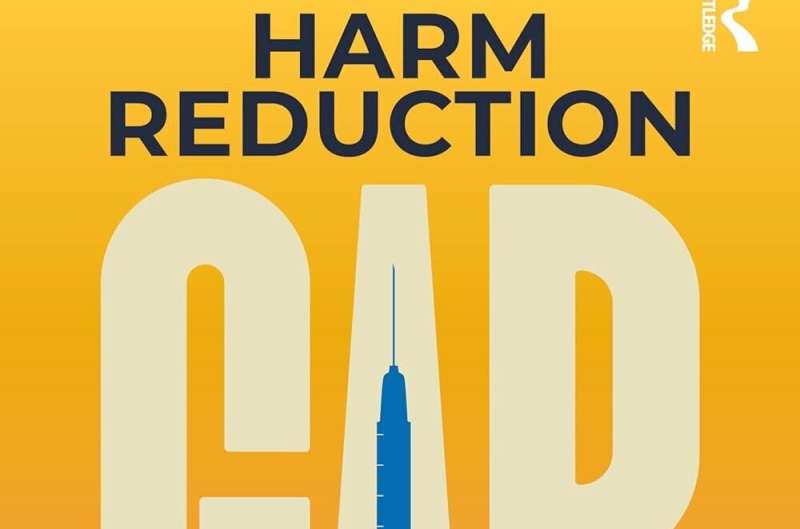This article has been reviewed according to Science X's editorial process and policies. Editors have highlighted the following attributes while ensuring the content's credibility:
fact-checked
trusted source
proofread
Making drug use less dangerous for users is the only way to tackle overdose epidemic, says new book

With more than 100,000 drug overdose deaths in the United States in one year, communities need more than 'just say no' drug prevention education and abstinence-only addiction treatment to save lives, an expert has warned.
Statistics show that most people who complete conventional drug prevention education as youth eventually go on to use alcohol, nicotine, or illegal drugs.
Harm reduction expert Sheila P. Vakharia, Ph.D., MSW, explains, "The majority have experimented, others use socially, and some experience substance-related problems or addictions. And, regardless of their patterns of use, most have never been taught strategies for safer substance use, moderation, or how to respond in a drug-related emergency such as an overdose."
The limits of abstinence-only treatment
While Vakharia agrees that formal addiction treatment is an important option for people, most will never walk into a treatment facility. It is estimated that 90% of people with addictions in any given year will not receive treatment, with reasons including cost and lack of nearby options.
So how does Vakharia suggest helping those left behind by both abstinence-based drug prevention education and addiction treatment?
In her new book, "The Harm Reduction Gap," Vakharia proposes viewing people unserved by the current approaches to substance use as being in a gap, a 'harm reduction gap," where their needs for education, support, and safety surrounding drug use are unaddressed. In this gap, people are at risk of infectious disease, overdose, and other preventable substance-related harms.
Vakharia argues that harm reduction strategies can be an essential safety net for people who use substances who are unserved by the current system of care, and that expanding access will save lives and make communities safer.
She explains, "Drug-related harms and risks are manageable when people receive the knowledge, skills, and tools to do so. But as long as we continue to tell people never to use drugs and leave them with no support when they use them, we will continue to have to lose lives to preventable illness and death."
What is harm reduction?
Vakharia explains, "Harm reduction is an approach that recognizes that drug use or other risky behaviors are a part of many people's everyday lives. Harm reductionists understand that although abstinence may be a safe strategy, it is not feasible, appealing, or practical for all people in all situations."
Despite evidence of their success in saving lives, harm reduction programs are still criminalized in many parts of the U.S. and worldwide, and are not easily available and accessible to the people who need them the most.
These services include sterile syringe exchange programs, overdose prevention centers where naloxone, the opioid overdose medication is available, and safe supply programs where people with substance use disorders can access pharmaceutical alternatives to reduce the risk of fatal overdose.
Beyond these, Vakharia argues that quality drug education for youth and training in emergency responses are also needed, as is harm reduction therapy as an alternative to abstinence-only treatment, and harm reduction mutual aid support groups as alternatives to Alcoholics Anonymous.
Rather than replacing abstinence-only messaging, Vakharia argues that harm reduction alternatives should be viewed as a complementary or supplementary option to those for whom abstinence is not a goal.
"While abstinence is a laudable goal, we must acknowledge that the majority of people in our society use mood-altering substances," she explains. "Instead of leaving them on their own to figure out how to stay safe, we can promote greater public health by providing people with the tools, education, and support to understand drug-related risks and reduce them.
"At present, our current continuum of care is ill-equipped to serve the complex and diverse needs of our communities. 'Just say no' drug prevention and abstinence-only treatment are only suitable for a small minority, whereas integrating a harm reduction approach to substance use will broaden our impact and meet community needs more effectively."
More information: Sheila P. Vakharia, The Harm Reduction Gap (2023). DOI: 10.4324/9781003301745





















